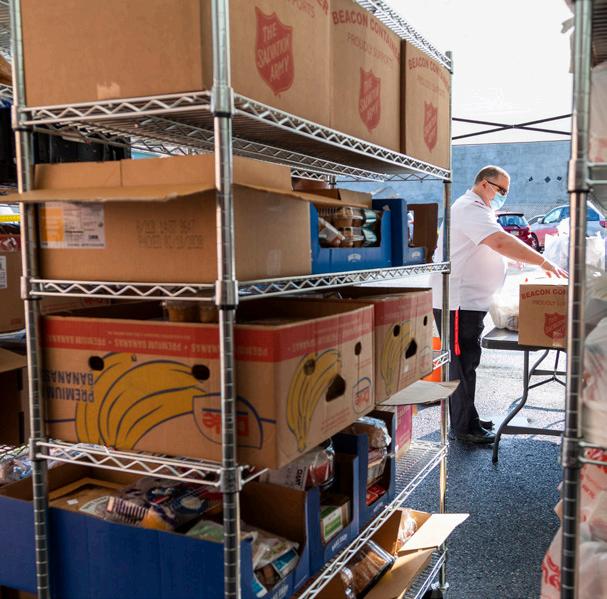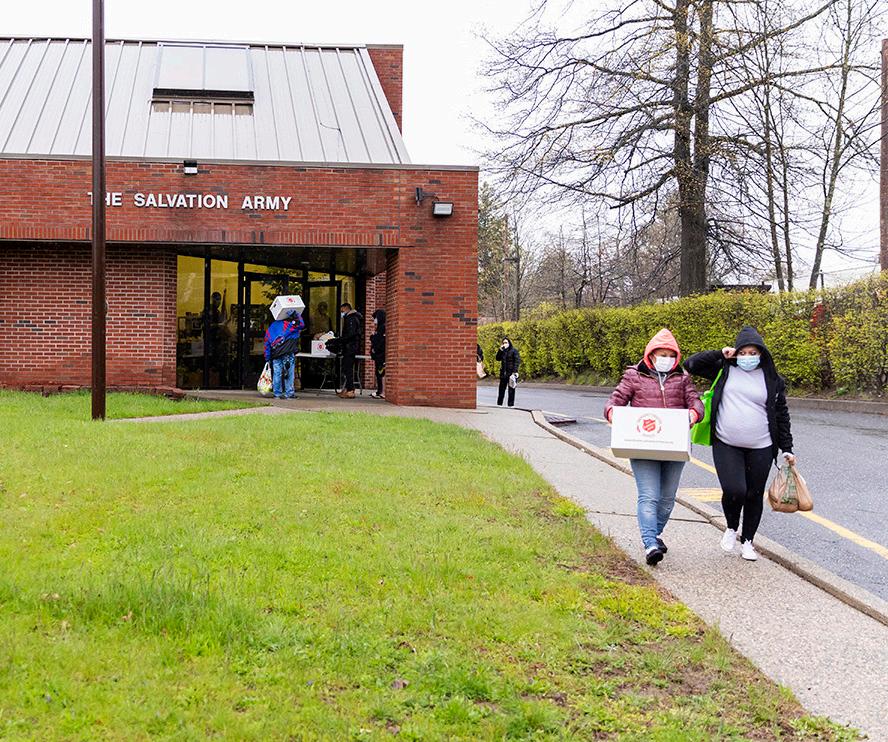
1 minute read
A Sign of Hope
by Robert Mitchell
The COVID–19 shutdown caused millions of people to lose their jobs, leaving them without money to buy food and other provisions and afraid to even leave their homes. However, in the midst of this crisis The Salvation Army reinvented itself as a food distribution hub in many communities. All over the United States, the Army’s familiar white food boxes emblazoned with the red Salvation Army shield were seemingly everywhere and served as a sign of hope.
“We call them ‘hope boxes.’ We don’t call them food boxes,” said Captain Kevin Johnson, the corps officer in Lynn, Mass., an area hit particularly hard by the virus. “We’re providing hope.”
At some point this year, 54 million Americans may not know where their next meal is coming from.
—United States Department of Agriculture
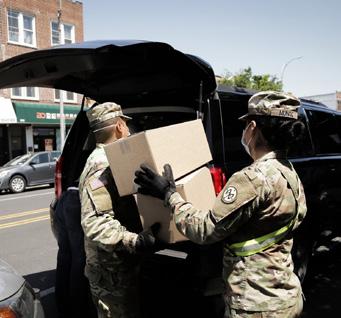
The National Guard helps distribute food boxes.
Necessity is said to be the mother of invention and Salvation Army officers, employees, and volunteers found innovative ways to get those hope boxes into the hands of hungry people—all while wearing masks, socially distancing, and staying safe.
Many Salvation Army facilities offered a “contact–free,” drive–thru pickup option for families. They just drove in, popped the trunk, and watched as staffers lowered the hope boxes into place. Other locations offered curbside pickup as would a local restaurant. In other cities, volunteers placed the boxes on tables and walked away, allowing recipients to get their food without encountering another person.
The Salvation Army also built relationships with food banks and other nonprofits and engaged the help of the National Guard. In some cities, state troopers helped deliver the hope boxes.
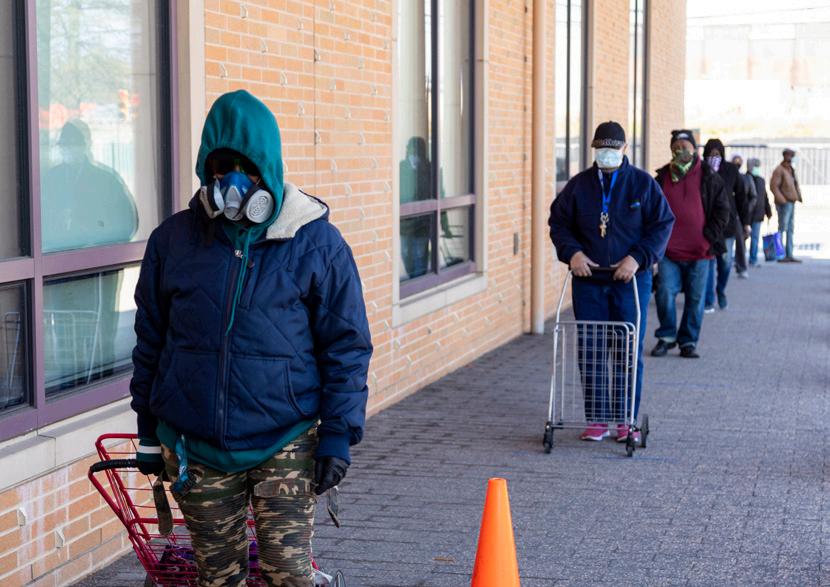

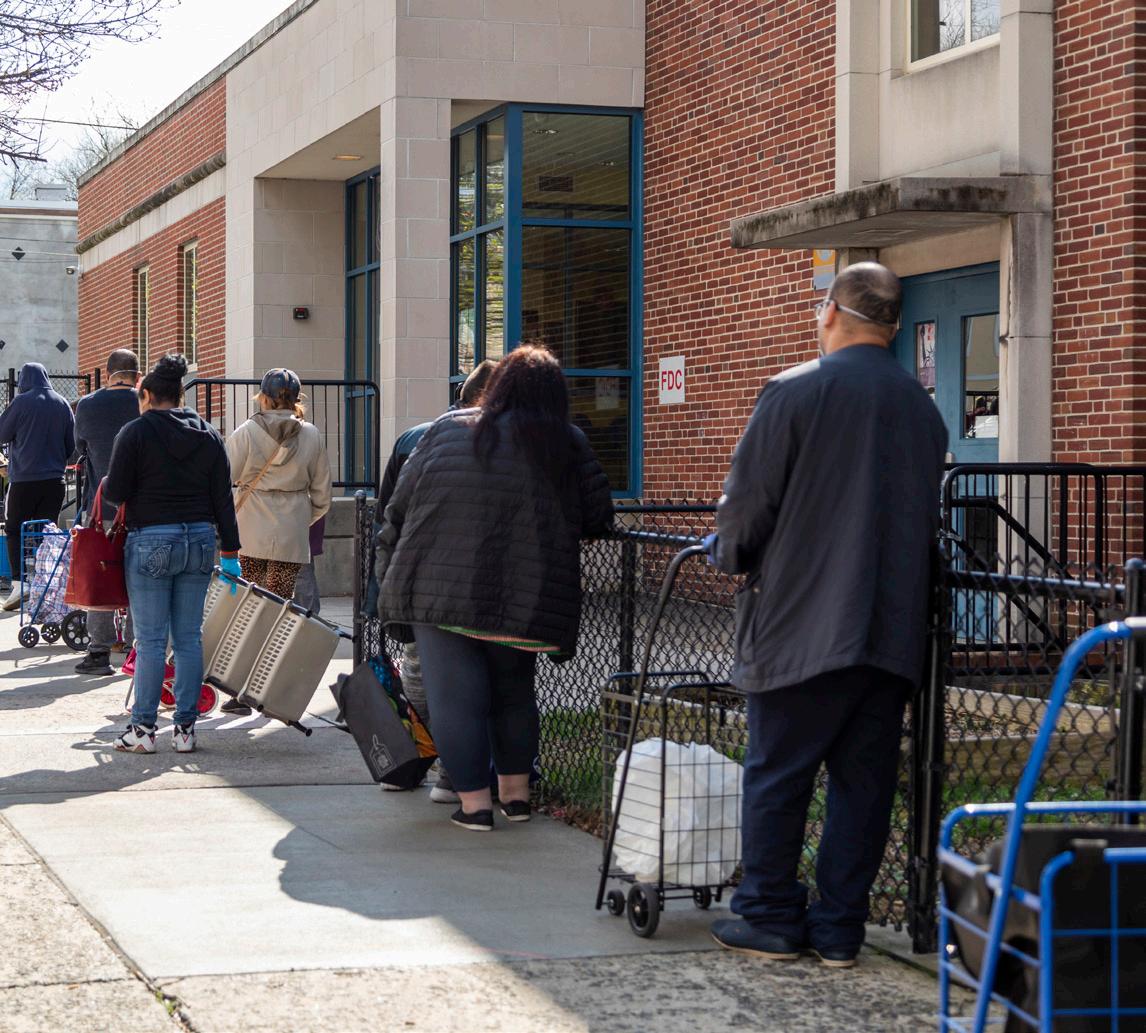
Pedestrians line up to receive food boxes. Other sites offered a “contact–free” drive–thru pickup option. Salvation Army volunteers sometimes left food on a table while social distancing (left) or put it in a recipient’s trunk for them.
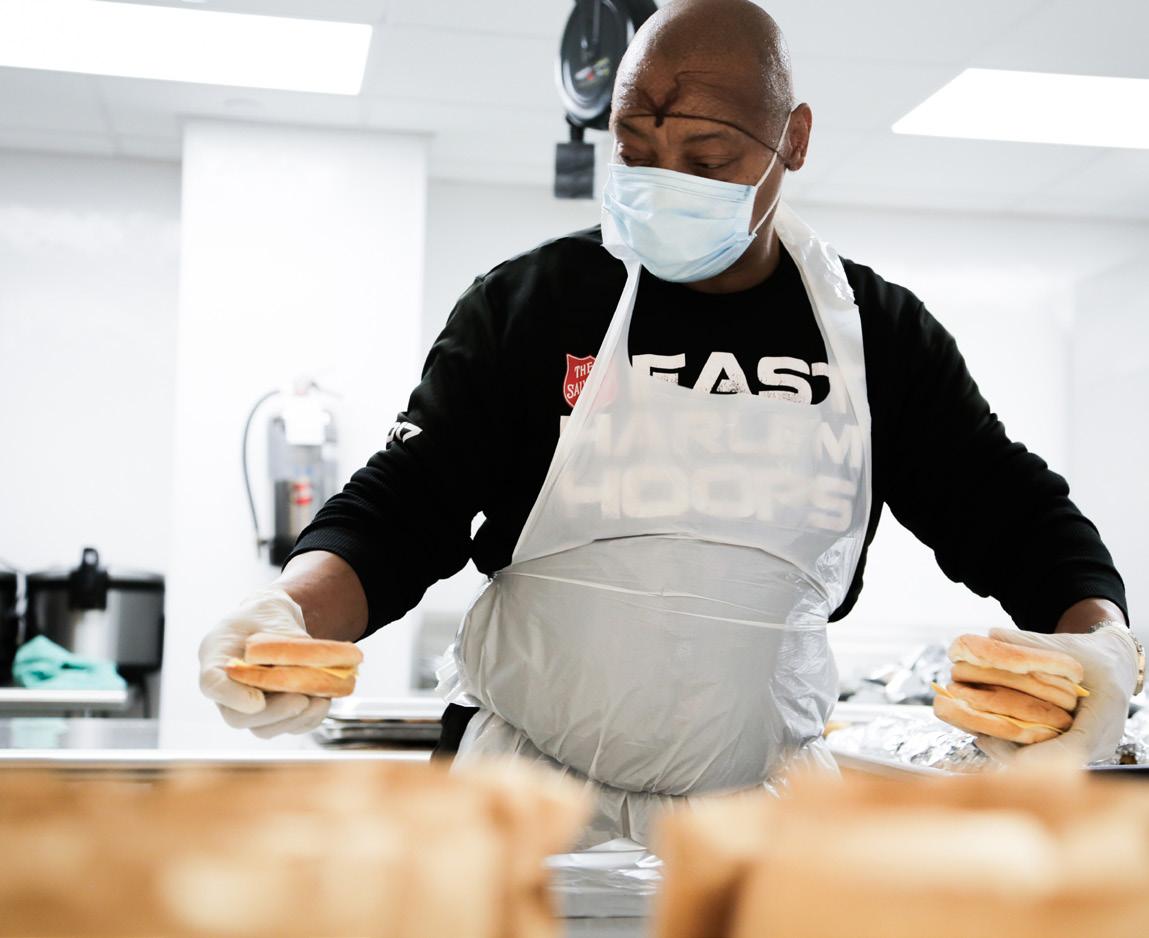
A volunteer makes sandwiches at the height of the pandemic.
The Salvation Army in the United States responded to the COVID crisis by providing nearly 3 million food boxes and almost 10 million prepared meals through Aug. 1.

The Salvation Army partners with food banks and other organizations, making the arrival of trucks full of food a daily occurrence.
